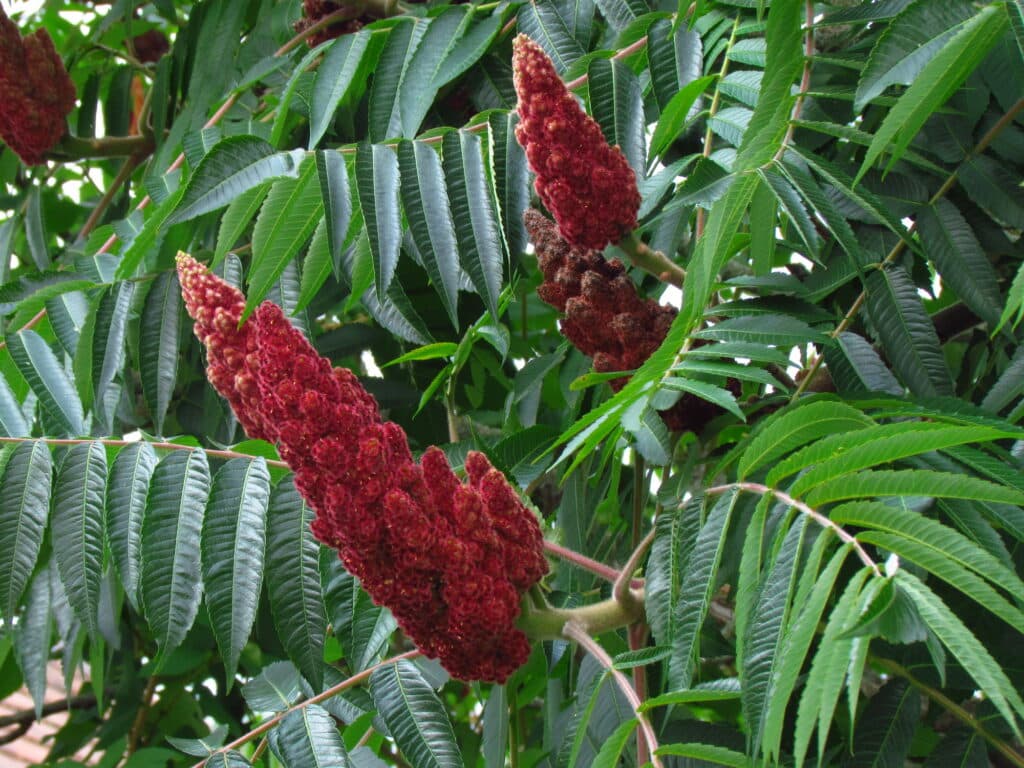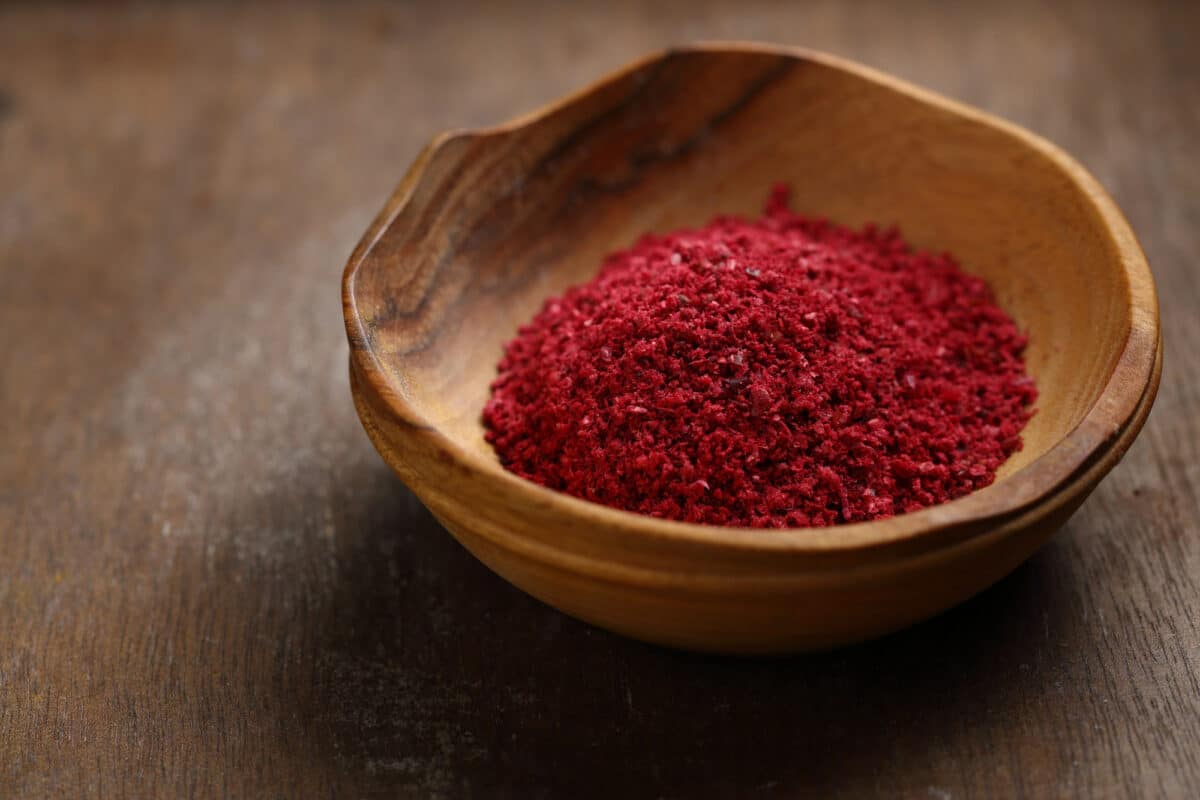Sumac is a type of small tree that grows in subtropical and temperate regions. Only the species of sumac with red berries have edible fruit; species with white berries are poisonous. The clusters of small, edible, purplish-red fruits contain vitamins A and C as well as antioxidants; they are high in malic acid, giving them a sour flavor. While the fruits are easy to forage and can be eaten straight off the bush, they are typically dried, ground, and used in cooking.
Sumac is common in Middle Eastern cuisine, where a dark red powder derived from the sumac
fruit is used to provide food with an earthy, tangy flavor. Dried ground sumac can be bought at most
Middle Eastern stores or specialty food markets. The spice can be used for seasoning meats and vegetables as well as salad dressings. As the flavor is sour, it can be substituted with lemon. Sumac is also a component of Za’atar, a spice mix, explained in more detail here: https://cms.thecookscook.com/guides/what-is-zaatar/
Rhus typhina, commonly known as Staghorn sumac, is a deciduous shrub native to North America and can be found in some Indigenous North American cuisine.. The Cherokee people use sumac berries to make a drink with similar flavor and appearance to pink lemonade. The plant also plays an important role in the spirituality practices and traditional medicines of many Indigenous groups.


